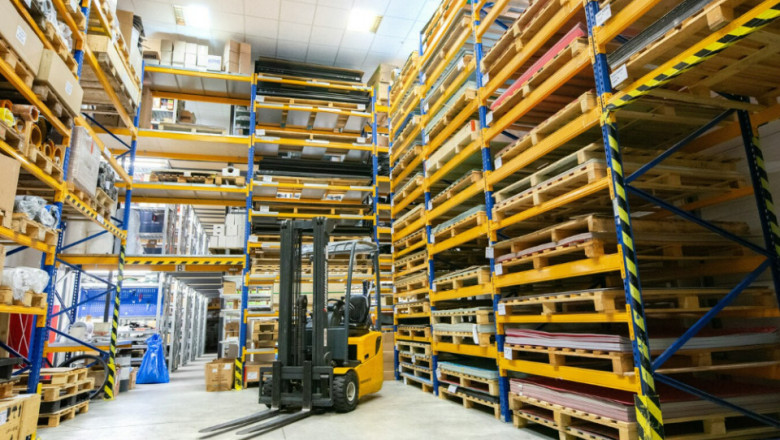17
views
views
Retailers' heavy investments in digitized, connected warehousing systems are driving growth in the warehouse automation market.



The global warehouse automation market is undergoing a significant transformation, fueled by a confluence of economic, technological, and demographic factors. As businesses adapt to rapid changes in consumer behavior, global supply chain pressures, and labor challenges, warehouse automation has emerged as a strategic necessity rather than an operational luxury. From retail and e-commerce to healthcare and manufacturing, automation technologies are reshaping how goods are stored, sorted, picked, and shipped.
This blog explores the major factors impacting the warehouse automation market, offering a comprehensive view of what’s driving change and where the industry is headed.
One of the most influential forces shaping the warehouse automation market is the exponential rise of e-commerce. Consumers today demand faster delivery times, greater product variety, and real-time order visibility. This has placed unprecedented pressure on warehousing operations to be more agile, scalable, and efficient.
Omnichannel retailing further complicates this scenario by requiring fulfillment from multiple channels distribution centers, physical stores, and even direct-from-manufacturer models. Automated solutions such as robotic picking systems, sortation equipment, and real-time inventory tracking have become essential tools in managing this complexity.
Global labor shortages in warehousing and logistics are intensifying, with high turnover rates, increased wage demands, and the physical toll of warehouse work making recruitment and retention difficult. This labor gap is especially visible in developed markets such as North America and Europe, where finding qualified personnel is both expensive and time-consuming.
Automation technologies such as autonomous mobile robots (AMRs), automated storage and retrieval systems (AS/RS), and goods-to-person systems help alleviate these challenges by handling repetitive, labor-intensive tasks. In addition, collaborative robots (cobots) are being introduced to work alongside human workers, improving efficiency without replacing human oversight entirely.
The development of intelligent technologies is at the heart of warehouse automation growth. Innovations in artificial intelligence (AI), machine learning, robotics, and the Internet of Things (IoT) are enabling more flexible, data-driven warehouse operations. These technologies allow for dynamic route optimization, predictive maintenance, real-time decision-making, and automated quality control.
Cloud-based warehouse management systems (WMS) and integration with enterprise resource planning (ERP) platforms further support seamless operations and improved visibility across supply chain networks.
Today’s customers expect speed, transparency, and reliability in their purchasing experience. Late or inaccurate deliveries can damage brand loyalty and lead to lost revenue. To meet these growing expectations, businesses are investing in automation to streamline fulfillment, reduce errors, and shorten delivery cycles.
Micro-fulfillment centers, which leverage compact automation in urban areas, are an emerging trend designed to address the need for same-day delivery. These facilities are heavily reliant on automation to manage high order volumes in smaller spaces.
The COVID-19 pandemic, geopolitical tensions, and natural disasters have exposed vulnerabilities in global supply chains. From port congestion to raw material shortages, companies are now seeking to build more resilient and flexible supply chains. Warehouse automation plays a critical role in this strategy, enabling real-time tracking, faster response times, and improved risk management.
While the long-term benefits of automation are well-documented—reduced labor costs, improved efficiency, and fewer errors—initial investments can be substantial. Capital expenditure remains a major consideration, particularly for small and mid-sized businesses. However, with modular and scalable solutions now available, many companies are finding it easier to justify and implement automation in stages.
Sustainability has become a key concern for modern businesses. Warehouse automation can contribute significantly to environmental goals by optimizing energy usage, reducing waste, and improving space utilization. Automated systems are often more energy-efficient than manual operations and can support green initiatives through better inventory management and route planning.
The warehouse automation market is being shaped by a diverse set of impactful factors ranging from technological advancements and labor constraints to evolving customer expectations and global supply chain disruptions. These elements are not only accelerating adoption but also influencing how companies prioritize, deploy, and scale automation within their operations.
As the market continues to grow, businesses that strategically embrace automation will be better positioned to compete in a fast-changing, customer-centric, and digitally driven world. Whether it’s through robotics, AI-powered systems, or integrated cloud platforms, warehouse automation is no longer optional it is a cornerstone of future-ready logistics.


Comments
0 comment